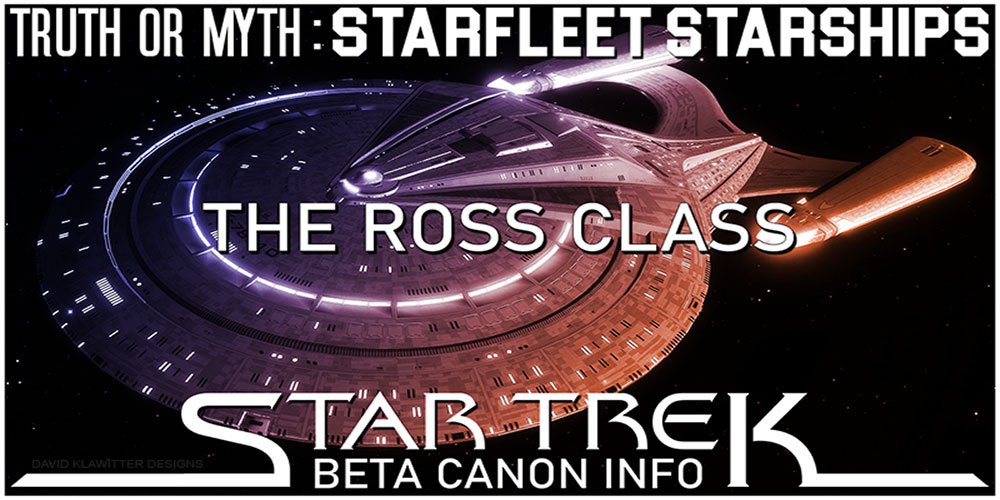Hello and welcome to another episode of Truth OR Myth Beta Canon, a Star Trek web series that dives into the history of any given topic using Beta Canon sources and my own imagination to fill in the gaps.
In today’s episode we’re looking at the Ross Class, as first seen in Star Trek: Online and subsequently made canon in Star Trek: Picard Season 2, to better understand its place in Star Trek History.
Please note, that there isn’t a lot of canon information on this class, and the information that does exist from Star Trek: Online, well some directly contradicts information that has already been established in Alpha Canon. Thus, I’ve had to slightly alter the design history and hope that the amazing teams for Star Trek: Online understands.
And as always, because this IS a Beta Canon video, all information re-laid should pretty much be taken with a grain of stardust, and only considered a little bit of Star Trek Fun! And so, with all that out of the way, let’s begin.
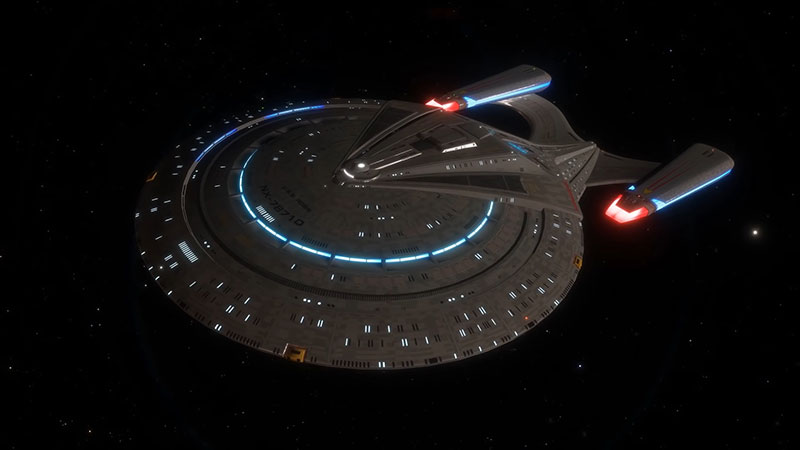
The Galaxy Class, initial seen as a failure by the Federation’s Public, only to become a well-respected starship design during the Dominion War, would get several variants on the design.
And one of these variants, the Ross Class, would come to be seen as one of the most successful upgrades to a starship design ever created. But what do we know about this starship class? Well today, we’ll find out…
When introduced in the 2360s, the Galaxy Class had been hyped up by Starfleet Command to be the ultimate starship design created by the organization up to that point in history.
Often compared to the Original Constitution Class of the 2240s, the Federation public was not only expecting great things from this amazing new class but was also very excited about it.
The launch of the USS Enterprise D, the newest flagship of the Federation, especially garnered a lot of attention, coming to symbolize the hope for the future that the citizens of the United Federation of Planets were feeling.
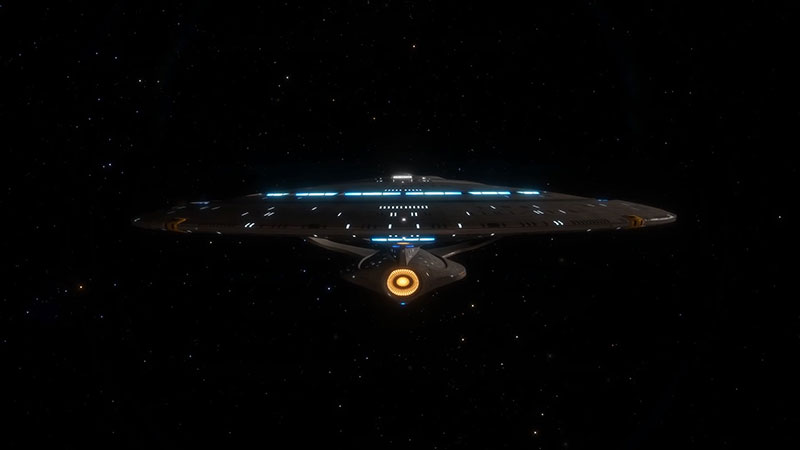
Of course, this was not meant to be. Shortly after the class’s launch, Federation Public Sentiment would begin to sway, with several disappointing engagements undertaken by several starships of the class.
The destruction of the USS Yamato, sister ship to the Enterprise, was taken particularly badly by the public, and by the time of the Battle of Wolf 359, most citizens throughout the Federation saw the class as more of a luxury liner than the fierce battleship that she was supposed to be.
Starfleet Command, however, was not going to give up on the Galaxy Class, with many of her designers seeing far more potential for greatness in her than even Starfleet Command could have imagined.
Approaching Starfleet with a proposal for a refit of the class, the organization was only too happy to commission a project to unlock the true potential of the class, and from there the Galaxy Class refit would be born.
The Galaxy refit itself would be an interesting endeavour, consisting of many trials and error upgrades for the first part of its existence. Also, individual technologies would be tested on various designs before the entire refit of the class with all those technologies would be implemented.
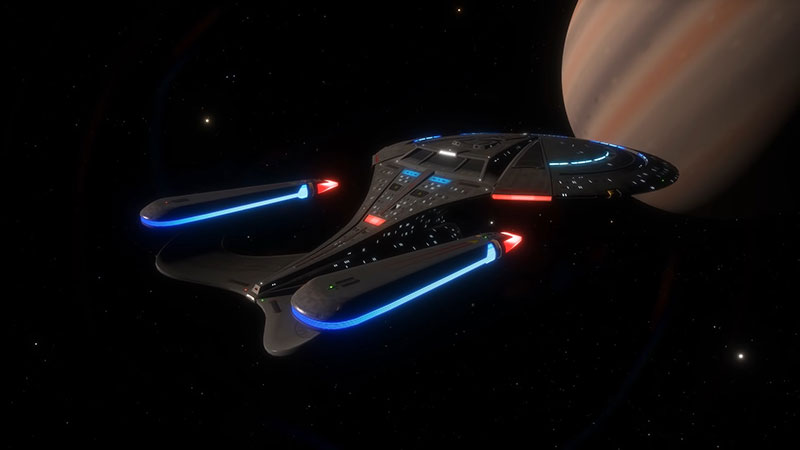
Although the Battle of Wolf 359 had been seen as a devastating loss for the federation, the drive to create new technologies to combat the Borg Threat would see the federation propel itself forward like never before.
But of course, these were untried and new technologies developed over time, making them difficult to simply install in 1 starship.
The Enterprise D for example would receive several upgrades. The first would be to her Warp Core, receiving a far more powerful version than the one she had initially been launched with, though this new warp core would still not be of the new style being tested on the Defiant Class.
She would also receive a complete control systems upgrade, having additional consoles for better control over starship systems installed on her bridge.
But even with these upgrades, the Galaxy Class would receive yet another blow, when a 20-year-old bird of prey with the Enterprise’s Shield Modulation frequencies, was able to significantly damage the starship, leading to the Enterprise’s destruction.
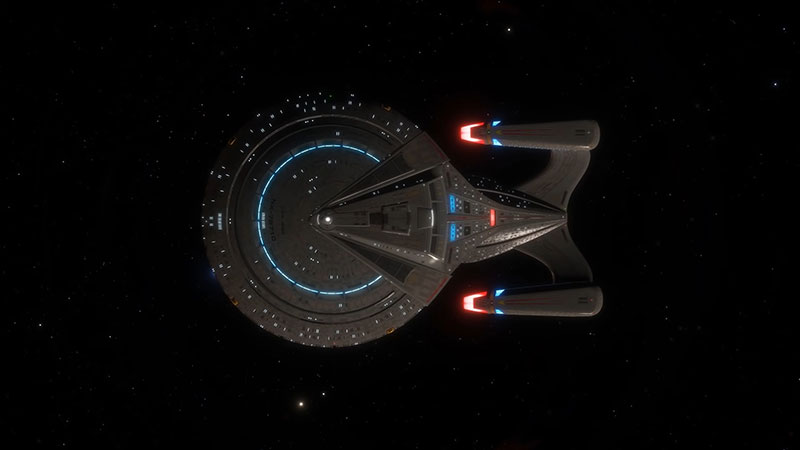
Luckily, however, by the time of the Incident at Veridian 3, the USS Galaxy was completing her own upgrades with several new systems, including the new warp core systems which would become standard throughout the fleet, installed and ready to go.
And during its shakedown cruising, the USS Galaxy would blow everyone’s expectations away… Her speed, Defensive and offensive systems performed almost 400% above what was expected. And this performance would lead directly to the Galaxy class’s redemption. But the upgrades would not stop there.
With Bio-Neural Circuitry and New weapons systems such as quantum torpedoes and modulated Phaser array systems, the final version of the refit of the Galaxy Class would come to be seen as a beast.
The perfect command and control vessel to lead starships in a fight, the galaxy class would perform so well, that Starfleet Command would approve a proposal for several new variants of the class to be developed and constructed, and the Ross Class would be born.
Named after Mary Golda Ross, the first known Native American female engineer and sitting at a length of approximately 663.2 meters, the Ross Class would retain many of the original design features of the Galaxy Class, being designed to be operated by 1000 officers and crew members.
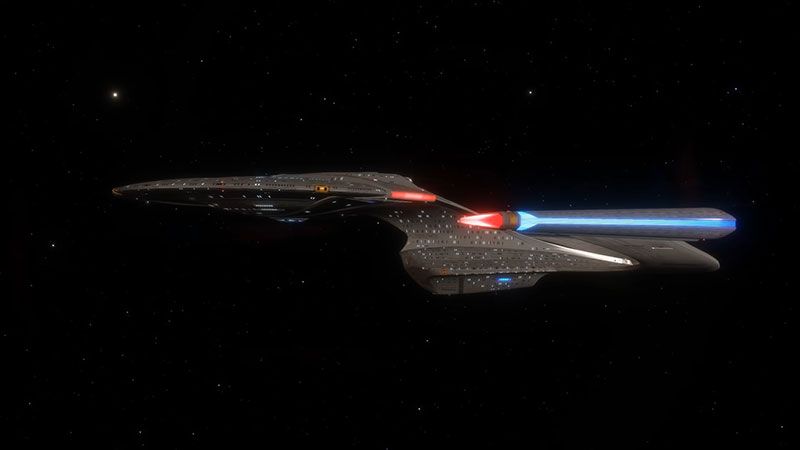
The biggest changes to the Ross Class were mostly internal, as the class itself was no longer intended to house families, but rather embrace her new role as a command starship.
And so, her internal layout would be completely redesigned, with the bulk of her luxurious guest quarters removed and replaced with Barrack Style living quarters, Cargo bays designed for weapon and equipment storage and several expanded science and medical facilities.
The Ross Class would have a standard safe cruising speed of warp factor 8.5, and an emergency maximum speed of warp 9.985, which she could sustain for 12-hour shifts before needing to power down the warp drive for component repair.
Tactically the Ross class would contain the new Phaser Array system which could be easily modified to allow for randomly modulated Phaser Blasts.
She would also have the latest upgrades to her Photon Torpedo Systems and as proven successful in the Sovereign Class, the Ross Class would also contain Quantum Torpedoes and several connected weapons bays, that would allow each starship to carry 500 of these new torpedoes if necessary.
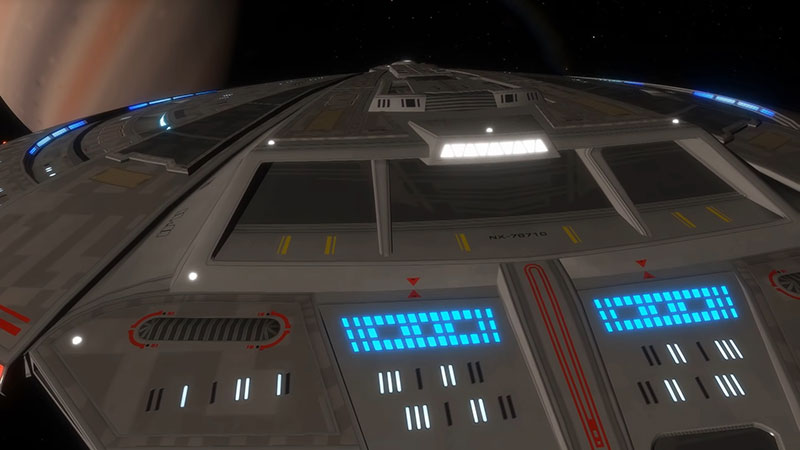
Shielding for the Ross Class would be the newly invented Multiphasic Regenerative Shielding. These shield systems would provide far greater protection than their original counterpart, allowing for a far faster recharge cycle for the system than had ever been created before.
Even the classes Shuttlebays would receive an extreme makeover, allowing the Ross Class to also act as a fighter carrier in mission requirements dictated the necessity.
The Ross Classes replicator systems would also receive a far more interesting upgrade. Whereas the Galaxy Class was original to have been seen as a great city in Space, The Ross Class would come to be seen as a great mobile Starbase in Space due to the industrial replicators included in her design.
This would allow the Ross Class to lead starships into deep space and repair any damage that might be caused during these missions. Making her an essential part of deep space exploration for Starfleet.
The industrial replicator would also allow the Ross class to quickly establish colonies, defensive arrays and outposts at the furthest reaches of the organization’s frontier.
Thankfully, because of the Ross Class’s overly successful performance, combined with the refit Galaxy Class’s equally successful status, the reputation stain that had plagued the class from almost the day the Galaxy had been launched, was almost completely forgotten, becoming merely a few noted in Federation Starship Design Historical Records.
And the Ross Class itself would continue to be upgraded and serve with distinction for over 200 years, earning this revolutionary variant of the class, its honourable place, in Starfleet History…
What to help the channel be refit and upgraded to stay ahead of the times? Then just click HERE to become a channel Patron…
Watch The Latest Truth Or Myth Below
Thank you for watching today’s episode of Truth or Myth Beta Canon, what do you think of the Ross Class, and the historical narrative that I’ve created here.
Do you want to see more videos like this one? Well leave your comments in the section below and don’t forget to like the video and subscribe to the channel.
Thanks again for watching, Live long and prosper…

